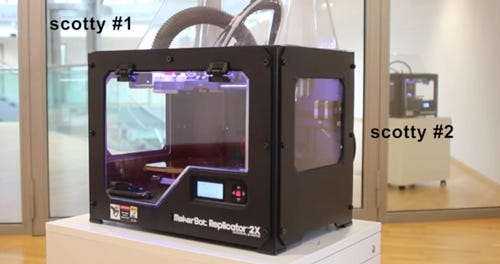3-D Printing
July 22, 2016
3-D printing is quickly coming into its own in the medical device industry as a tool for both customized tools and implants. Johnson & Johnson has exclusive 3-D printing partnerships with both Hewlett Packard and high-speed 3-D printing company Carbon. And Stryker is creating a 3-D printing plant in Ireland.
Including it in a list of Star Trek-related technologies might cause someone to say, "Huh?" But think about it. In a rudimentary way, 3-D printing is doing the same thing as the replicators and transporters of the science fiction franchise.
Researchers at the Hasso Plattner Institute in Potsdam, Germany, captured this connection with their two "Scotty" 3-D printers. ("Beam me up, Scotty.") The off-the-shelf 3D printers were extended with a 3-axis milling machine, a camera, and a microcontroller. An object in one printer is "scanned" as it is milled down, with the information transmitted to the second printer, where the object is reconstructed.
Continue >>
[Image courtesy of Stefanie Mueller, assistant professor at HPI]
About the Author(s)
You May Also Like




.png?width=300&auto=webp&quality=80&disable=upscale)
